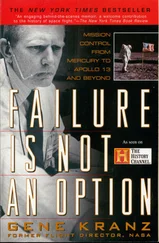Trinath Sahoo - Root Cause Failure Analysis
Здесь есть возможность читать онлайн «Trinath Sahoo - Root Cause Failure Analysis» — ознакомительный отрывок электронной книги совершенно бесплатно, а после прочтения отрывка купить полную версию. В некоторых случаях можно слушать аудио, скачать через торрент в формате fb2 и присутствует краткое содержание. Жанр: unrecognised, на английском языке. Описание произведения, (предисловие) а так же отзывы посетителей доступны на портале библиотеки ЛибКат.
- Название:Root Cause Failure Analysis
- Автор:
- Жанр:
- Год:неизвестен
- ISBN:нет данных
- Рейтинг книги:5 / 5. Голосов: 1
-
Избранное:Добавить в избранное
- Отзывы:
-
Ваша оценка:
- 100
- 1
- 2
- 3
- 4
- 5
Root Cause Failure Analysis: краткое содержание, описание и аннотация
Предлагаем к чтению аннотацию, описание, краткое содержание или предисловие (зависит от того, что написал сам автор книги «Root Cause Failure Analysis»). Если вы не нашли необходимую информацию о книге — напишите в комментариях, мы постараемся отыскать её.
Provides the knowledge and failure analysis skills necessary for preventing and investigating process equipment failures Root Cause Failure Analysis: A Guide to Improve Plant Reliability
Root Cause Failure Analysis: A Guide to Improve Plant Reliability
Root Cause Failure Analysis — читать онлайн ознакомительный отрывок
Ниже представлен текст книги, разбитый по страницам. Система сохранения места последней прочитанной страницы, позволяет с удобством читать онлайн бесплатно книгу «Root Cause Failure Analysis», без необходимости каждый раз заново искать на чём Вы остановились. Поставьте закладку, и сможете в любой момент перейти на страницу, на которой закончили чтение.
Интервал:
Закладка:
Acknowledgment
First and foremost, I would like to thank God, the Almighty, for His showers of blessings throughout to complete the book successfully. In the process of putting this book together, I realized how true this gift of writing is for me. You have given me the power to believe in my passion and pursue my dreams. I could never have done this without the faith I have in you, the Almighty.
I have to thank my parents for their love and support throughout my life. Thank you both for giving me strength to reach for the stars and chase my dreams.
For my wife Chinoo, all the good that comes from this book I look forward to sharing with you! Thanks for not just believing, but knowing that I could do this! I Love You Always and Forever!
To my children Sonu and Soha: You may outgrow my lap, but you will never outgrow my heart. Your growth provides a constant source of joy and pride to me and helped me to complete the book.
Without the experiences and support from my peers and team at Indian Oil, this book would not exist. You have given me the opportunity to lead a great group of individuals.
“Thanks to everyone on my publishing team.”
Only those who dare to fail greatly can ever achieve greatly.
Robert F. Kennedy.
1 FAILURE: How to Understand It, Learn from It and Recover from It
Failure and fault are virtually inseparable in households, organizations, and cultures. But the wisdom of learning from failure is much more than from success. Many a time we discover what works well, by finding out what will not work; and “probably he who have never made a mistake never made a discovery.”
Thomas Edison’s associate, Walter S. Mallory, while discussing inventions, once said to him, “Isn’t it a shame that with the tremendous amount of work you have done you haven’t been able to get any results?” Edison replied, with a smile, “Results! Why, my dear, I have gotten a lot of results! I know several thousand things that won’t work.”
People see success as positive and failure as negative phenomena. Edison’s quote emphasizes that failure isn’t a bad thing. You can learn and evolve from your past mistakes. But in organizations executives believe that failure is bad. These widely held beliefs are misguided. Understanding of failure’s causes and contexts will help to avoid the blame game and create an atmosphere of learning in the organization. Failure may sometimes considered bad, sometimes inevitable, and sometimes even good in organizations. In most companies, the system and procedures required to effectively detect and analyze failures are in short supply. Even the context‐specific learning strategies are not appreciated many times. In many organizations, managers often want to learn from failures to improve future performance. In the process, they and their teams used to devote many hours in after‐action reviews, post‐mortems, etc. But time after time these painstaking efforts led to no real change. The reason: being, managers think about failure in a wrong way.
To be able to learn from our failures, we need to develop a methodology to decode the “teachable moments” hidden within them. We need to find out what exactly those lessons are and how they can improve our chances of future success.
Failure Type
Although an infinite number of things can go wrong in machinery, systems, and process, mistakes fall into three broad categories: preventable failure, failure in complex system, and intelligent failure.
Preventable Failures
Most failures in this category are considered as “bad.” These could have been foreseen but weren’t. This is the worst kind of failure, and it usually occurs because an employee didn’t follow best practices, didn’t have the right talent, or didn’t pay attention to detail. They usually deviate from specification in the closely defined processes or deviate from routine operations and maintenance practices. But in such cases, the causes can be readily identified and solutions can be developed.
If you’ve experienced a preventable failure, it’s time to more deeply analyze the effort’s weaknesses and stick to what works in future. Employees can follow those new processes learned from past mistakes consistently, with proper training and support.
Human error used to be an area that was associated with high‐risk industries like aviation, rail, petrochemical and the nuclear industry. The high consequences of failure in these industries meant that there was a real obligation on companies to try to reduce the likelihood of all failure causes. Human error is also a high‐priority, preventable issue.
Unavoidable Failures in Complex Systems
In complex organizations such as aircraft carriers, nuclear power plants, and petrochemical plants, system failure is a perpetual risk. A large number of failures are due to the inherent uncertainty of working of such systems.
The lesson from this type of failure is to create systems to try to spot small failures resulting from complex factors, and take corrective action before it snowballs and destroys the whole system. These type of failure may not be considered bad but reviewed how complex systems work. Most accidents in these systems result from a series of small failures that went unnoticed and unfortunately lined up in just the wrong way.
The complex systems are heavily and successfully defended against failure by construction of multiple layers of defense against failure. These defenses include obvious technical components (e.g. backup systems, “safety” features of equipment) and human components (e.g. training, knowledge) but also a variety of organizational, institutional, and regulatory defenses (e.g. policies and procedures, certification, work rules, team training). The effect of these measures is to provide a series of shields that normally divert operations away from accidents.
Intelligent Failures
Intelligent failures occur when answers are not known in advance because this exact situation hasn’t been encountered before and experimentation is necessary in these cases. For example testing a prototype, designing a new type of machinery or operating a machine in different operating condition. In these settings, “trial and error” is the common term used for the kind of experimentation needed. These type of failures can be considered “good,” because they provide valuable insight and new knowledge that can help an organization to learn from past mistakes for its future growth. The lesson here is clear: If something works, do more of it. If it doesn’t, go back to the drawing board
Building a Learning Culture
Leaders can create and reinforce a culture that makes people feel comfortable for surfacing and learning from failures to avoid blame game. When things go wrong, they should insist to find out what happened – rather than “who did it.” This requires consistently reporting failures, small, and large; systematically analyzing them; and proactively taking steps to avoid reoccurrence.
Most organizations engage in all three kinds of work discussed above – routine, complex, and intelligent. Leaders must ensure that the right approach to learning from failure is applied in each of them. All organizations learn from failure through following essential activities: detection, analysis, learning, and sharing.
Detecting Failure
Spotting big, painful, expensive failures are easy. But failure that are hidden are hidden as long as it’s unlikely to cause immediate or obvious harm. The goal should be to surface it early, before it can create disaster when accompanied by other lapses in the system. High‐reliability‐organization (HRO) helps prevent catastrophic failures in complex systems like nuclear power plants, aircraft through early detection.
Читать дальшеИнтервал:
Закладка:
Похожие книги на «Root Cause Failure Analysis»
Представляем Вашему вниманию похожие книги на «Root Cause Failure Analysis» списком для выбора. Мы отобрали схожую по названию и смыслу литературу в надежде предоставить читателям больше вариантов отыскать новые, интересные, ещё непрочитанные произведения.
Обсуждение, отзывы о книге «Root Cause Failure Analysis» и просто собственные мнения читателей. Оставьте ваши комментарии, напишите, что Вы думаете о произведении, его смысле или главных героях. Укажите что конкретно понравилось, а что нет, и почему Вы так считаете.












